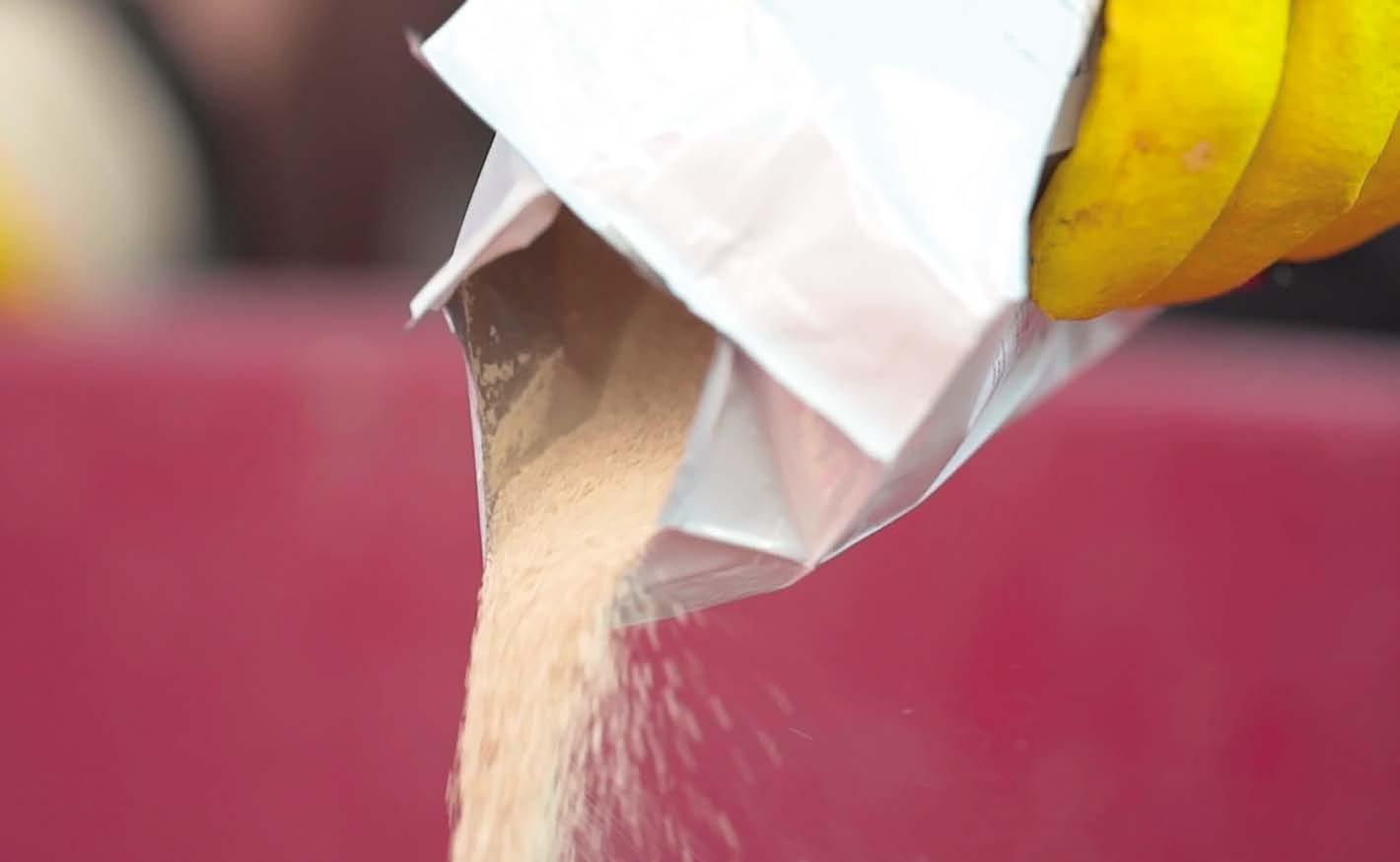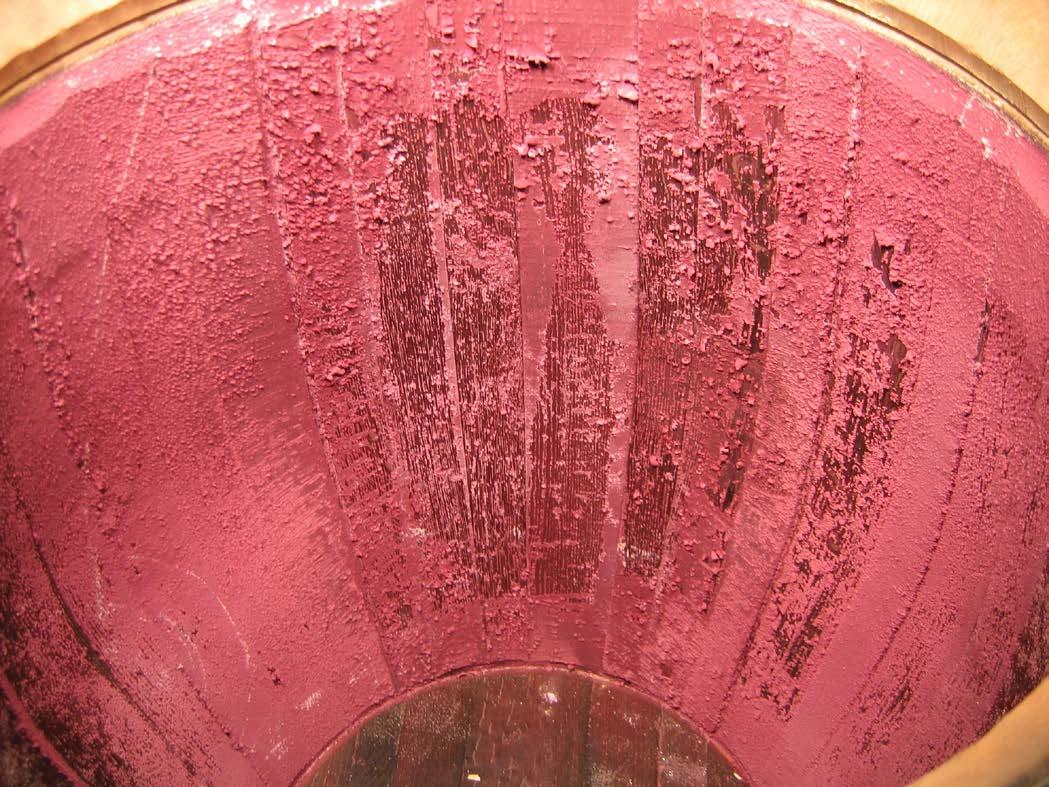
4 minute read
Here come the ultrasonics
Barrel sanitation: the second priority in oenology
Winemaker and writer Paul Le Lacheur takes a close look at strategies for the microbial control of barrels.
Anew study identifies oak products as the greatest single cost element in wine production, after the cost of grapes (Corsey 2006). So why do we pay it so relatively little attention? The answer lies in the old adage “great wine is made in the vineyard”. That’s terrific: it’s a given! Fruit quality is of prime importance… but that vineyard fruit quality effort is all useless if your subsequent wine is spoilt by a Brettanomyces yeast-borne infection from barrel contamination.
The latest in barrel sanitation seems to come in the form of sonic (high frequency) treatment. Ultrasonics are used effectively to remove tartrate deposition and eradicate (or at least control) Brettanomyces. Both dead and living microbial cells and spores have been shown to migrate into the pores of the oak, therefore treatments capable of removal at depth under the surface are preferred. In addition, microbial biofilms are capable of forming, and indeed flourishing, on the oak surfaces. Pseudomycelia formation by Brettanomyces can assist an organism’s ability to penetrate the pores of the oak at a deeper level. One of the most elegant solutions is high pressure ultrasound (HPU). This is delivered via a sonotrobe which is inserted through the barrel bung hole. The barrel is filled with water at approximately 60⁰C and sonotrobe contact time can be as little as 5-13 minutes. Tartrate removal and destruction of spoilage micro-organisms occur simultaneously. Another distinct advantage of HPU treatments is in energy savings, winemakers can follow the high frequency sound application with a simple water cleaning step using filtered water which can be reused up to 100 times.
Extending barrel life
One study (Bates et al. 2009) found ultrasonic treatment has cost advantages because of the less invasive nature of application. The lead author of this study commented further on it before the release of the results (2001): “In terms of how long ultrasonics can extend barrel life, I’d say conservatively two to three years”. Ultrasonic sanitation is relatively inert and therefore reduces overall oak costs owing to this extended barrel life feature. HPU operates at around 1,000 psi (6,900 kPa) at the recommended 60⁰C, with contact times depending on the heaviness of tartrate deposition and the condition of the barrel itself.
HPU not only removes tartrate deposits, but kills all (100%) viable Breattanomyces cells on the oak surface and up to a depth of 4mm (Yap et al. 2008). Yet another advantage of ultrasound energy is that it does not affect the internal structure of oak (down to a depth of 8mm), as determined by computer x-ray tomography. Ultrasonic sanitation also delivers benefits by reducing Brettanomyces to ‘tolerable’ levels to a depth of 6mm, depending on barrel size and the amount of wine contact. Some winemakers prefer
DIRECT PITCH !

Fermentis E2U™ yeasts are so efficient and secure that you can pitch them directly. You save time, gain comfort and act green, consuming less water and energy. If you prefer, you can choose to rehydrate them beforehand: we guarantee the same final results.
not to totally eliminate Brettanomyces in any event, observing a ‘complexing’ aromatic effect on the wine at low levels. Complete tartrate elimination is a claim made without fear of aroma destruction. This is particularly important in the sensory dimension described as ‘toasted’ or ‘subtly nutty’. While ultrasonics are currently the treatment of choice for Brettanomyces control, other microbial infections are well controlled simply by hot water treatments. Application of hot water at around 80⁰C for a minimum of 20 minutes has proven effective in removing acetic acid bacteria. This treatment is particularly popular in sweet white wine production. This is due to the (potentially) much higher levels of acetobacter formed during the fermentation and aging of this category of wine. Yet another tried and tested treatment is high pressure steam vapour. It destroys all bacteria, leaving the barrel dry and immediately usable. Steam vapour kills Brettanomyes, but is also effective against lactic acid bacteria such as Lactobacillis and Pedicoccus. Sensory identification of the presence of these two bacteria is the recognition of a ‘sour milk’ character in the wine. This treatment saves water, extends the life of the barrel and embraces the advantages of using a more ‘natural’ cleaning agent. In recent research on barrel sanitation (Barata et al. 2013), steam was successful in removing yeast from the cleaned internal surface of a barrel. However, none of the treatments tested by the AWRI (e.g. high pressure hot water, ozone, SO2 or SO2 dissolved in water), were able to guarantee total deactivation of yeast cells in wood grooves or staves up to 8mm in depth. The AWRI confirms high pressure steam vapour and/or hot water treatment at 85⁰C are effective measures. In contrast, some research (Edwards and Cartwright 2019) indicates there is difficulty in maintaining water temperature at the required temperature (above 80⁰C) for 25 minutes.
Microbiological control of barrels (especially against Brettanomyces) is possible and the best treatments all seem to confirm the advantages of energy and cost savings.











